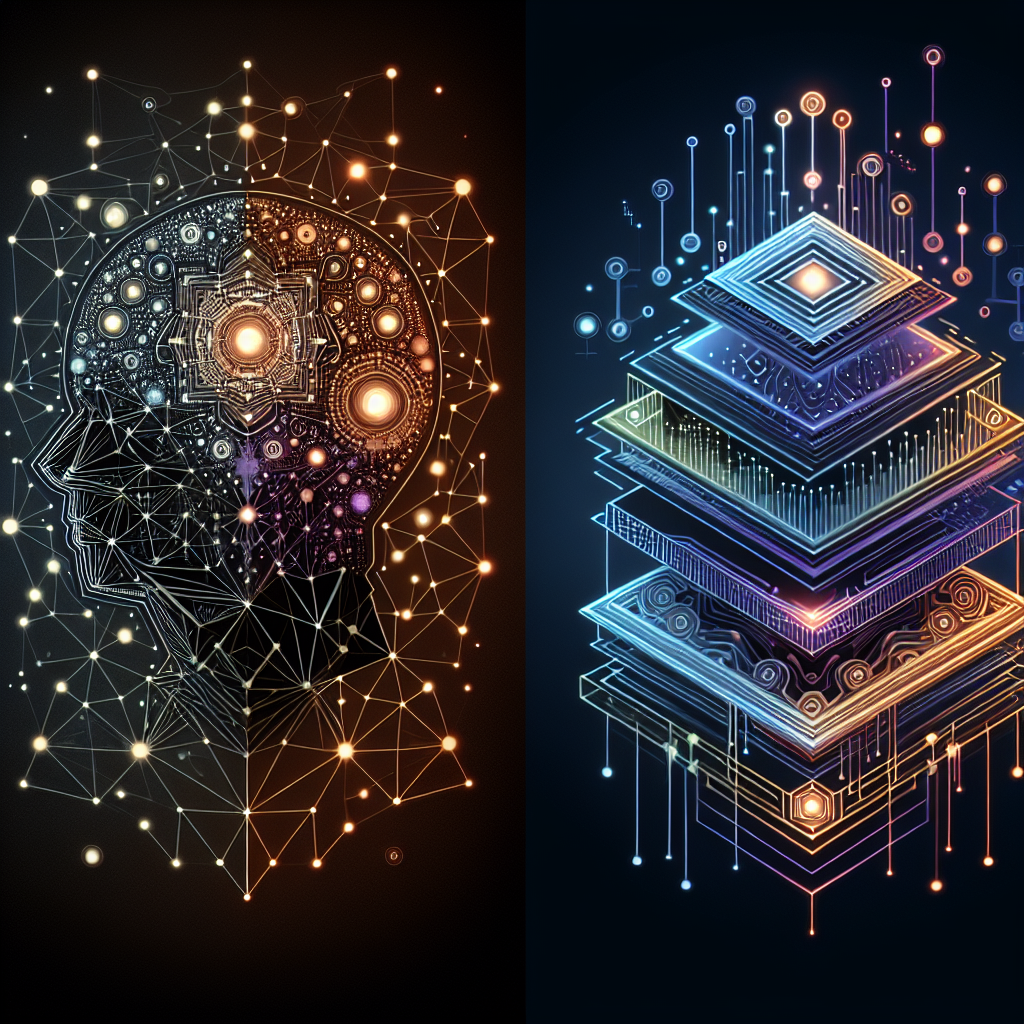AI vs ML: Which Technology is More Advanced?
Artificial Intelligence (AI) and Machine Learning (ML) are two closely related fields that have gained significant attention in recent years. Both technologies have the potential to revolutionize industries, improve efficiency, and enhance decision-making processes. However, there is often confusion about the differences between AI and ML, and which technology is more advanced. In this article, we will explore the distinctions between AI and ML, examine their respective capabilities, and discuss which technology is more advanced.
AI vs ML: What’s the Difference?
Artificial Intelligence is a broad field of computer science that aims to create intelligent machines capable of simulating human cognitive functions. AI encompasses a wide range of applications, from natural language processing and computer vision to robotics and expert systems. Machine Learning, on the other hand, is a subset of AI that focuses on the development of algorithms that enable computers to learn from data and make predictions or decisions without being explicitly programmed.
In essence, AI is the overarching concept of creating intelligent machines, while ML is a specific approach to achieving that goal. AI can be thought of as the umbrella term that encompasses various technologies, including ML, deep learning, neural networks, and more.
Capabilities of AI and ML
Both AI and ML technologies have made significant advancements in recent years, leading to impressive capabilities that were once thought to be the stuff of science fiction. AI systems can now recognize speech, interpret images, play games, and even drive cars autonomously. ML algorithms have been used to power recommendation systems, detect fraud, optimize supply chains, and improve healthcare outcomes.
One of the key advantages of AI and ML technologies is their ability to analyze vast amounts of data and extract meaningful insights. This capability has led to breakthroughs in areas such as personalized medicine, predictive maintenance, and customer segmentation. By leveraging AI and ML, organizations can unlock valuable insights that can drive innovation, improve decision-making, and create competitive advantages.
Which Technology is More Advanced?
When it comes to determining which technology is more advanced, the answer is not necessarily straightforward. AI is a broader concept that encompasses a wide range of technologies, including ML. While AI has been around for decades and has made significant progress in recent years, ML is a more specific approach that has gained traction due to its ability to learn from data and make predictions.
In terms of capabilities, both AI and ML have their strengths and weaknesses. AI systems excel at tasks that require reasoning, problem-solving, and decision-making, while ML algorithms are particularly well-suited for tasks that involve pattern recognition, classification, and prediction. In many cases, AI systems use ML algorithms as a key component to achieve their goals.
In terms of sophistication, AI systems such as IBM’s Watson, Google’s DeepMind, and OpenAI’s GPT-3 have demonstrated impressive capabilities in natural language processing, image recognition, and game-playing. These systems leverage a combination of AI and ML techniques to achieve their impressive results. On the other hand, ML algorithms such as support vector machines, random forests, and deep learning networks have been instrumental in powering recommendation systems, fraud detection, and autonomous vehicles.
Ultimately, the advancement of AI and ML technologies depends on the specific application and the goals of the organization. While AI systems may appear more advanced due to their broad capabilities, ML algorithms are often more specialized and efficient in solving specific tasks. The key is to choose the right technology for the job and leverage the strengths of each approach to achieve the desired outcomes.
FAQs
Q: What are some examples of AI applications?
A: Some examples of AI applications include virtual assistants (e.g., Siri, Alexa), self-driving cars, chatbots, fraud detection systems, and medical diagnosis tools.
Q: How is AI different from ML?
A: AI is the overarching concept of creating intelligent machines, while ML is a specific approach to achieving that goal by enabling computers to learn from data and make predictions.
Q: Which technology is more advanced, AI or ML?
A: Both AI and ML technologies have made significant advancements in recent years, and the answer depends on the specific application and goals of the organization.
Q: What are some key advantages of AI and ML technologies?
A: Some key advantages of AI and ML technologies include the ability to analyze vast amounts of data, extract meaningful insights, drive innovation, improve decision-making, and create competitive advantages.
Q: How can organizations leverage AI and ML technologies?
A: Organizations can leverage AI and ML technologies to power recommendation systems, detect fraud, optimize supply chains, improve healthcare outcomes, and enhance decision-making processes.
In conclusion, AI and ML technologies have the potential to revolutionize industries, improve efficiency, and enhance decision-making processes. While both technologies have their strengths and weaknesses, the key is to choose the right technology for the job and leverage the strengths of each approach to achieve the desired outcomes. Ultimately, the advancement of AI and ML technologies depends on the specific application and goals of the organization. By harnessing the power of AI and ML, organizations can unlock valuable insights, drive innovation, and create competitive advantages in today’s rapidly evolving digital landscape.

